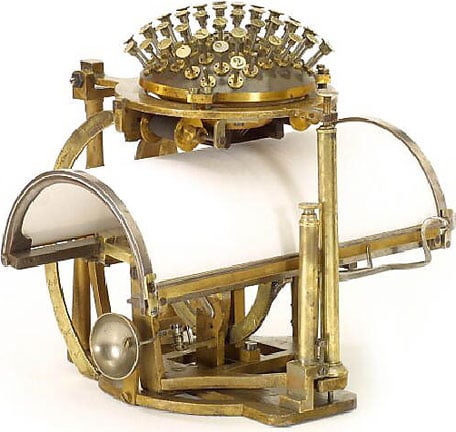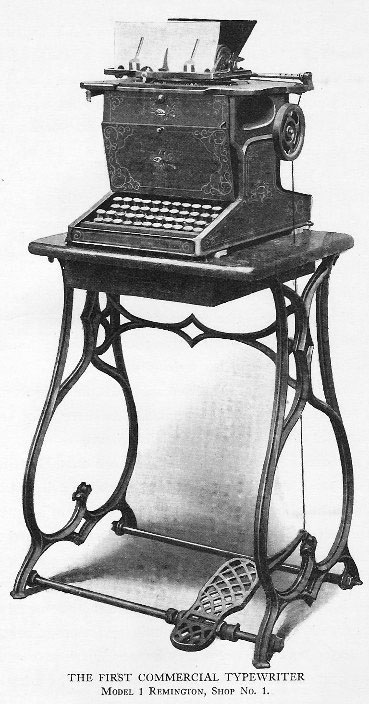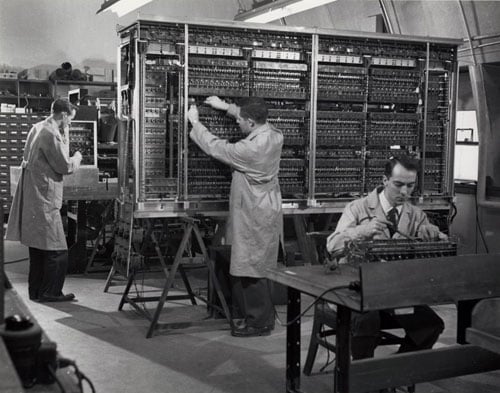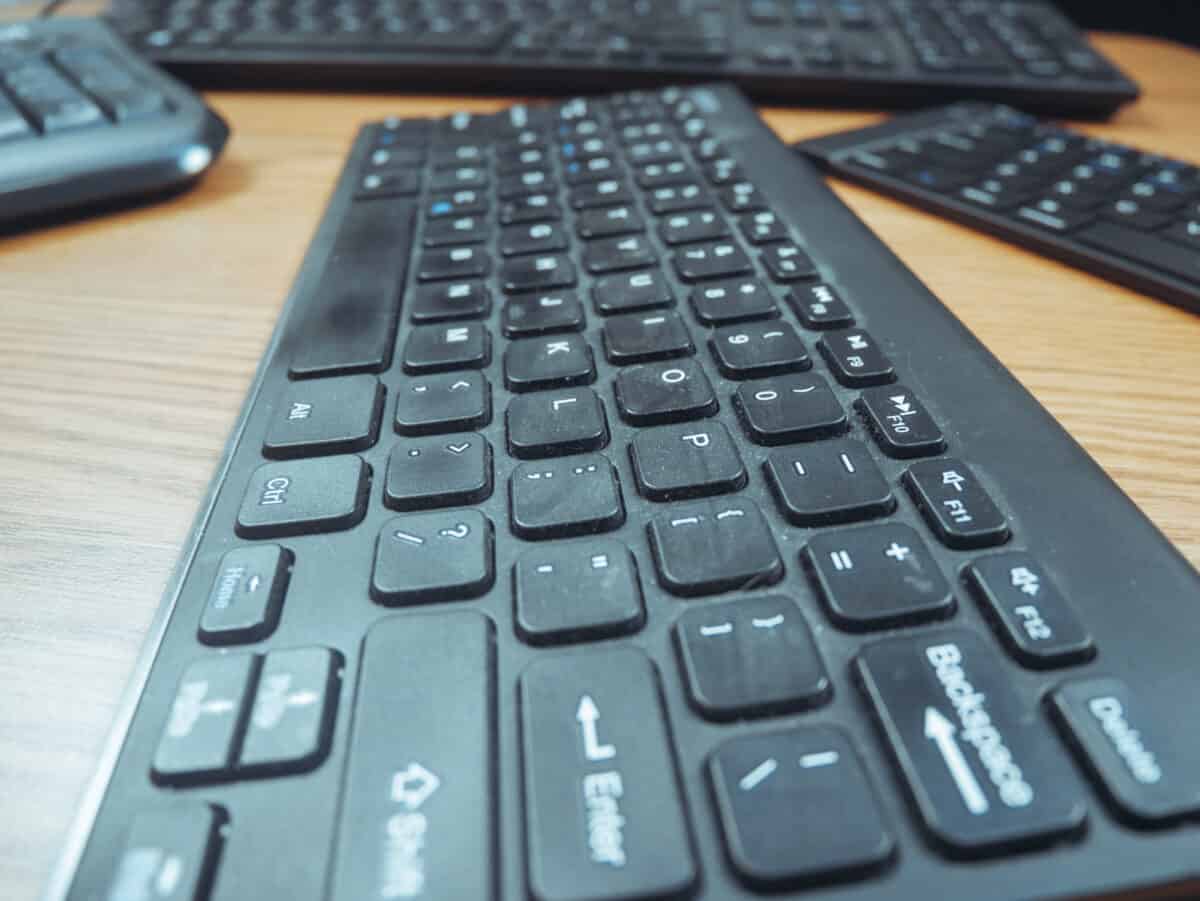Few accessories have proven as essential and critical as the keyboard over the history of the personal computer. Today, having a keyboard happens without a second thought, but this wasn’t always the case. In many ways, like the computer mouse, keyboards were not initially considered vital to computer use until a few decades after they became popular in educational and government circles.
For this reason, understanding the history of the modern computer keyboard is incredibly fascinating, especially when you consider that keyboards didn’t always look like what you are typing on now. In many ways, the individuals who developed the early keyboard designs could have never envisioned what we use today with the popular QWERTY layout.
Quick Facts
- Created
- October 1867
- Creator (person)
- Christopher Latham Sholes, Soule, Glidden
- Original Use
- Typing
- Cost
- $12000
A Visual Keyboard History
Created by Techquickie, Linus of Linus Tech Tips walks us through the history of the keyboard in a seven-minute video that is full of detail. It’s a fantastic walkthrough of how the keyboard evolved and even gives us a look at typing life before the QWERTY keyboard layout.
As the video shows, the real turn of the tide for keyboards came in the 1960s when some of the first computers, known as Video Terminals, started to arrive with integrated keyboards. Of course, as memory serves for anyone who saw their first personal computer in the 1980s, it was during this decade when keyboards started to show off new designs with ergonomic layouts and became a staple part of home life.
Have you ever heard of “Reed Switches?” If not, this video walkthrough helps you learn how this switch type laid the ground for the modern membrane keyboard millions, if not billions of keyboard users are using right this very minute.
Modern Computer Keyboard History
As you start understanding the history of the modern keyboard, the first big fact is to know that the modern computer keyboard can be traced back to the typewriter. So, who invented the typewriter?
Like other modern machines, such as television, automobiles, and airplanes, several people contributed their interventions and insights, eventually developing the first successful typewriter and the computer keyboard.
Francesco Rampazzetto (1510-1576) is the first man to be recognized. His name comes before the Guild of Booksellers and Printers in Venice (Venezia). The inventor developed the scrittura tattle in 1575. This machine impressed letters on paper. The scrittura tattle further served as an auxiliary device for the blind.
Afterward, Englishman, Henry Mill (1683-1771), a waterworks engineer in the New River Company came into the picture. Henry Mill held two English patents; №376 from 1706 and №395 from 1714. The first patent was for chariots, springs for coaches, and other vehicles.
The Second Keyboard
The second one, which arrived on January 7, 1714, was a Machine for Transcribing Letters. This one appears to have been quite similar to a modern typewriter.
In the early nineteenth century, a noble and skilled Italian mechanic, Giuseppe Pellegrino Turri, invented the first working typewriter model. Turri further developed a carbon paper to supply ink to his typing machine.
Another version states that Turri’s typewriter started working in 1802 when Carolina’s brother, Agostino Fantoni da Fivizzanto, helped his blind sister actualize it. According to the version, Turri only improved on Agostino’s machine and developed the carbon paper four years later in 1806.
The First Commercial Typewriter
The world’s first commercially produced typewriter was invented in 1865. Nonetheless, it remained unpatented until 1870, when Danish pastor Rasmus Malling-Hansen took up the challenge.
Malling-Hansen, pictured above, arranged the most frequently used letters to be pressed by the fastest writing fingers. It had consonants to the right and vowels to the left. This arrangement, along with the placement of the letters on short radial pistons, made the Writing Ball a fast-speed typing machine.
In the original model, the paper was attached to a cylinder, which moved with the help of an electromagnetic battery. In principle, this made the writing ball also the first electric typewriter.
The Writing Ball of Malling Hassen
Christopher Sholes, Carlos Glidden, and Samuel Soule, from Milwaukee, Wisconsin (US patent No 79265), invented the first commercially successful typewriter in 1867. Later, Glidden and Sholes became frustrated by the low sales and decided to sell their patent to Densmore and Yost for $12,000. Densmore then agreed with E. Remington and his sons to commercialize the machine as the Sholes and Glidden Typewriter.
Remington was also not left behind. Production of his first typewriter began in March 1873. The typewriter had a QWERTY keyboard layout, which saw a slow adoption by other manufacturers. The first Remington typewriters came with a foot pedal (like sewing machines) to control carriage returns.
Initially, Remington typewriters’ acceptance was slow. However, several improvements later facilitated their widespread adoption. They included the shift key, which enabled typing of both lower-case and upper-case letters using the keys (1878, in the Remington Model 2 typewriter), printing on the upper side of the roller (1880), and the tab key, which permitted the setting of margins (1897), to mention but a few.

Remington’s Typewriter
Thomas Edison patented an electric typewriter in 1872 but introduced the first workable model in the 1920s. So, how did we get to the high-tech age of computers and plastics?
While typewriters stood out as the ancestors of all key-based data entry devices, the first computer keyboard was made from punch cards and teletype equipment. Herman Hollerith patented the first keypunch devices, which further evolved to incorporate keys for number entry and text.
In 1948, the Binac computer developed a typewriter keyboard unit. The keyboard had eight keys with octal numbers ranging from 0 to 7. Its initial function was to introduce data or programs into the computer. The electromechanically controlled typewriter further printed the data from the keyboard and memory data.

The BINAC Computer
When it reached 1954, researchers experimented with the keyboard while feeding data into the computer. Before that, computer users utilized paper tapes or punched cards to enter programs into the computers.
In 1955, Whirlwind became the first computer in the world to allow its users to input commands through a keyboard, confirming the usefulness and convenience of this device.

Modern Computer Keyboards: Historical Significance
The many years of inventions, trials, and errors have yielded various modern computer keyboards with premium features. In addition, at the press of every key, you get a corresponding written symbol and often a function.
The contemporary computer keyboard is as ubiquitous as computers in the 21st century. More than 241 million keyboards were shipped in 2023 alone, totaling more than 2.7 billion laptops and desktops worldwide, and the keyboard is a major component of every one of these.
Different Types of Computer Keyboards

When it comes to which computer keyboard suits you best, there may be more to consider than meets the eye. You’ll likely want to consider comfort, convenience, efficiency, and even the sound it makes. It would be best if you also considered wired versus wireless, which, for example, is something gamers consider when it comes to ensuring there’s reduced lag when playing a game.
Mechanical Keyboard
Arguably, the most popular type of keyboard today is the mechanical keyboard, which offers a separate moving part for each key. This keyboard type is wildly popular with gamers, typists, and programmers as it provides more accuracy with each key press. Most mechanical keyboard manufacturers also offer downloadable software to customize RGB colors or additional shortcuts.
Chiclet Keyboards
Another common keyboard type is the chiclet, which is generally flat compared to other keyboard types. This means it sits lower than a mechanical keyboard, which can sit higher up. Keys on this keyboard type are also more spaced apart, making them more comfortable to type on for long periods.
Ergonomic Keyboards
If you choose an ergonomic keyboard, there is often a physical difference in how the keyboard is laid out, making it more comfortable for your wrists. This could mean a curve in the wrist pad or the keyboard itself, curved to feel natural to how wrists and hands lay on a keyboard when not typing.
Magic Keyboards

Designed exclusively for Apple products, Magic Keyboards work with Macs, iPads, and Apple’s laptop lineup. Products made for and by Apple often include specialized shortcut keys that even third-party manufacturers cannot replicate for Apple products.
The image featured at the top of this post is ©Julian Somadewa/Shutterstock.com.

